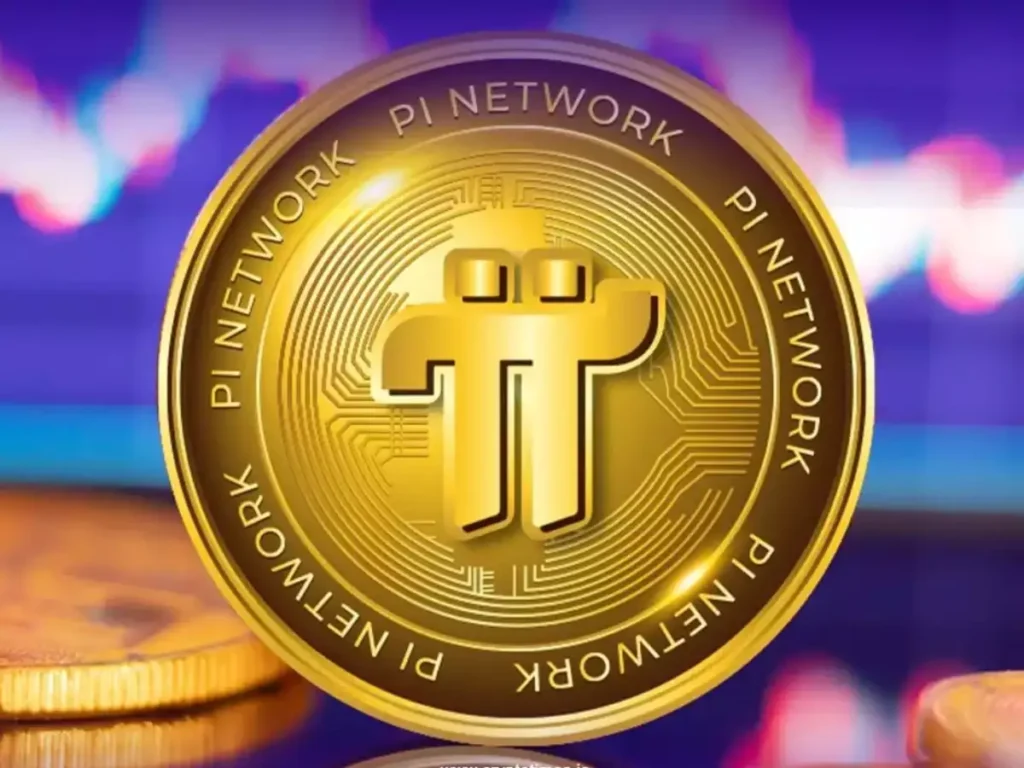
Cryptocurrencies have revolutionized finance, but mining them has traditionally required expensive hardware and high energy costs—until Pi Network came along. Launched in 2019 by a team of Stanford graduates, Pi Network promises mobile-friendly, energy-efficient mining for everyday users.
With over 55 million engaged users (as of 2024, per Pi Network’s official announcements), Pi has sparked both excitement and skepticism. Is it the next Bitcoin, or just another overhyped project?
Will Network Crash Below $0.10? Shocking Price Predictions Reveal Its Fate!
In this comprehensive guide, we’ll cover:
✅ What Pi Network is and how it works
✅ Step-by-step mining instructions for beginners
✅ How Pi compares to Bitcoin in technology and adoption
✅ Is Pi Network legit—or a scam? (Key risks & red flags)
Let’s dive in.
1. What Is Pi Network Cryptocurrency? A Beginner’s Guide
1.1 The Vision Behind Pi Network
Pi Network was founded by Dr. Nicolas Kokkalis, Dr. Chengdiao Fan, and Vince McPhillip, all affiliated with Stanford University. Their goal? To democratize cryptocurrency mining by allowing users to mine coins directly from their smartphones—without draining battery or requiring expensive hardware.
Unlike Bitcoin, which relies on energy-intensive Proof-of-Work (PoW), Pi uses the Stellar Consensus Protocol (SCP), a more eco-friendly alternative.
1.2 How Pi Network Works
Pi’s mining process is simple:
– Users open the app daily and press a button to “mine.”
– No complex computations—mining relies on trust-based security circles.
– The more active users you refer, the higher your mining rate (up to a limit).
Current Supply Stats (2024 Estimates):
🔹 Total Supply Cap: ~100 billion Pi (much higher than Bitcoin’s 21M).
🔹 Circulating Supply: Not yet fully tradable (still in Enclosed Mainnet).
1.3 Key Features of Pi Coin
✔ Free Mining (For Now) – No upfront cost, unlike Bitcoin mining rigs.
✔ Energy-Efficient – Uses 99% less energy than Bitcoin (per Pi whitepaper).
✔ KYC Mandatory – Must verify identity to withdraw Pi in the future.
1.4 Current Status: Enclosed Mainnet & Future Plans
Pi Network remains in “Enclosed Mainnet” (Phase 3), meaning:
– Pi cannot yet be traded on major exchanges like Binance or Coinbase.
– Users must pass KYC verification to migrate Pi to the mainnet wallet.
– The team has hinted at an Open Mainnet launch in 2024-2025, but no official date is confirmed.
2. How to Mine Pi Coin: Step-by-Step Guide for Beginners
2.1 Prerequisites
📱 Smartphone (iOS or Android).
🔗 Referral Code (required—get one from an existing user).
2.2 Step-by-Step Mining Process
Step 1: Download the Pi Network App
– Official App Store: [iOS](https://minepi.com) | [Android](https://play.google.com/store/apps/details?id=com.blockchainvault)
– Avoid fake apps—only use the official Pi Network app.
Step 2: Sign Up
– Use Facebook or phone number (no email option).
– Enter a referral code (this boosts your initial mining rate).
Step 3: Start Mining
– Tap the ⚡ button every 24 hours to keep mining active.
– Inactivity for 3+ days pauses earnings.
Step 4: Boost Your Mining Rate
– Invite friends (each active referral increases your rate).
– Join a Security Circle (trusted group of miners for extra rewards).
2.3 How Much Pi Can You Mine?
🔸 Base Rate: ~0.1–0.2 Pi/hour (varies by user activity).
🔸 With Referrals: Up to 2-3x faster mining (if you have 5+ active miners).
Example Calculation:
– If you mine 0.15 Pi/hour, you’d earn ~3.6 Pi/day (0.15 x 24).
– Over a year, that’s ~1,314 Pi—but future value is speculative.
2.4 When Will Pi Be Tradable?
– Pi remains non-transferable until Open Mainnet.
– Rumors suggest 2024-2025 launch, but no official confirmation.
3. Pi Network vs. Bitcoin: Key Differences and Similarities
3.1 Similarities
🔹 Decentralized – No single entity controls the network.
🔹 Limited Supply – Pi has a cap (~100B), Bitcoin has 21M.
🔹 Blockchain-Based – Both use distributed ledger tech.
3.2 Key Differences
3.3 Can Pi Network Surpass Bitcoin?
– Unlikely as a store of value (Bitcoin’s first-mover advantage is huge).
– Possible as a payment coin if Open Mainnet succeeds and exchanges list Pi.
4. Is Pi Network Legit? Scam or the Next Big Crypto?
4.1 Signs Pi Network Is Legitimate
✅ Real Team – Stanford founders with blockchain expertise.
✅ Active Development – Regular app updates and KYC rollout.
✅ Large Community – 55M+ users (though not all are active).
4.2 Red Flags & Risks
⚠ No Real-World Value Yet – Pi can’t be sold or traded.
⚠ KYC Requirements – Some worry about data privacy risks.
⚠ Delayed Open Mainnet – Originally expected in 2021, still pending.
4.3 Verdict: Should You Trust Pi Network?
– Not a scam, but high risk.
– Worth mining (since it’s free), but don’t invest money.
– Success depends on Open Mainnet launch and exchange listings.
Conclusion: Is Pi Network Worth It?
Pi Network is an ambitious experiment in mobile mining, but its future remains uncertain.
✔ Pros: Free mining, low energy use, strong community.
❌ Cons: No liquidity yet, delays in Open Mainnet.
Final Advice:
– Mine Pi as a speculative bet (it costs nothing but time).
– Don’t expect Bitcoin-like gains—treat it as a high-risk, high-reward asset.
What’s Next?
🔹 Monitor Pi’s Open Mainnet updates.
🔹 Complete KYC early to secure future withdrawals.